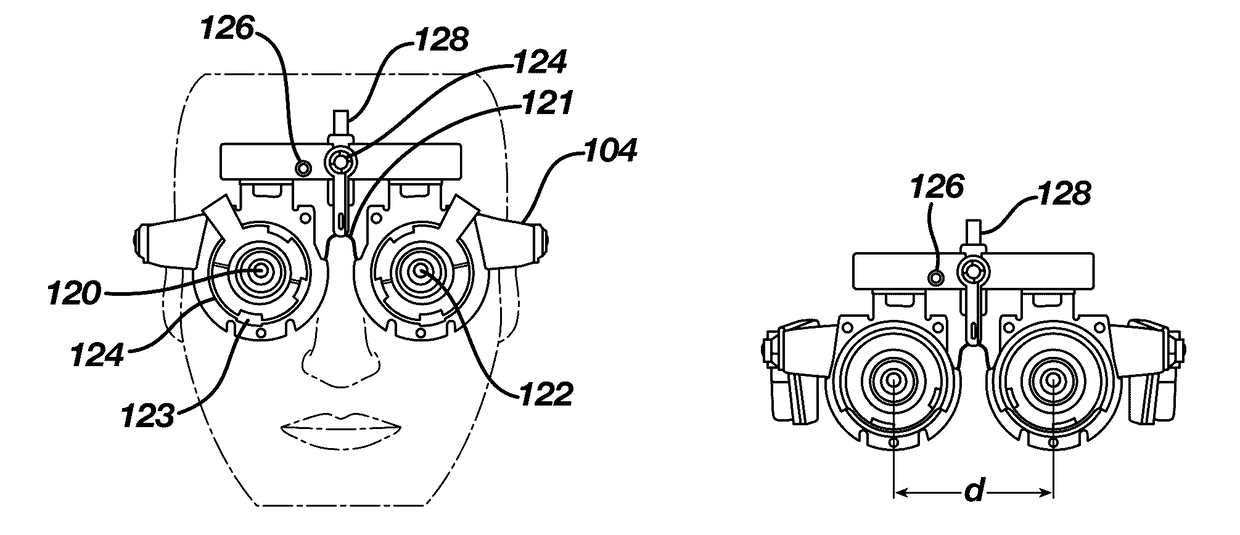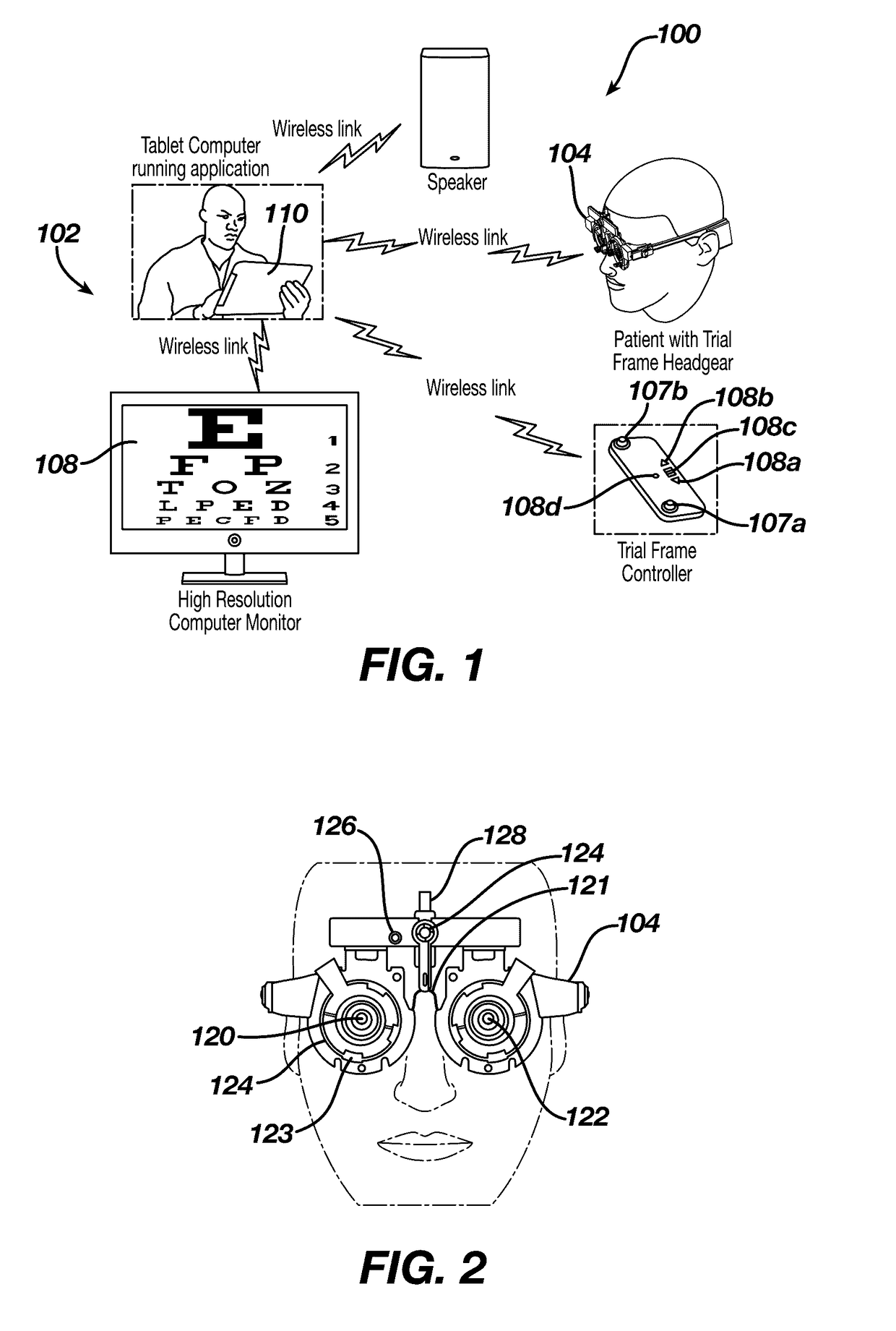System and method for determining corrective vision
a technology of corrective vision and system, applied in the field of contact lenses, can solve the problems of low prevalence of patients needing higher power correction, high cost of tool and mold manufacturing, and high cost of casting molding for a large number of skus
- Summary
- Abstract
- Description
- Claims
- Application Information
AI Technical Summary
Benefits of technology
Problems solved by technology
Method used
Image
Examples
Embodiment Construction
[0041]Referring now to FIG. 1, a preferred embodiment of a system for assessing optical corrective needs of a patient 100 includes a computer system 102 including computer 110 such as a tablet, laptop or desktop having a refraction software application loaded thereon, a high resolution display 108 such as a computer monitor, refractive eyewear 104 to be worn by the patient, and an eyewear controller 106 that adjusts at least sphere power in the refractive eyewear 104 lenses. In the illustrated embodiment, the computer 110 is wirelessly connected to the display device 108, and runs the refractive software application that controls the display presented to the patient. The computer 110 is further wirelessly connected, such as by a Bluetooth Low Energy communication link, to the refractive eyewear 104, and similarly to the eyewear controller 106. Although the described embodiment is preferred, those skilled in the art will readily understand that any suitable computer system can be imp...
PUM
 Login to View More
Login to View More Abstract
Description
Claims
Application Information
 Login to View More
Login to View More - R&D
- Intellectual Property
- Life Sciences
- Materials
- Tech Scout
- Unparalleled Data Quality
- Higher Quality Content
- 60% Fewer Hallucinations
Browse by: Latest US Patents, China's latest patents, Technical Efficacy Thesaurus, Application Domain, Technology Topic, Popular Technical Reports.
© 2025 PatSnap. All rights reserved.Legal|Privacy policy|Modern Slavery Act Transparency Statement|Sitemap|About US| Contact US: help@patsnap.com



